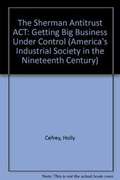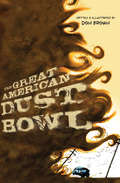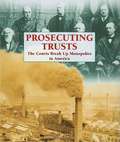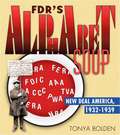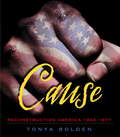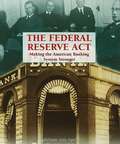Special Collections
District List: NYC Core Curriculum 8th - Social Studies
Description: The New York City Core Curriculum program aims to provide a high-quality curricula to NYC students through a seamless instructional program across grades and subjects. This list has been curated by #NYCDOE for 8th Grade Social Studies materials.
- Table View
- List View
The Sherman Antitrust Act
by Holly CefreyAs big business trusts proliferated in the late 1800s, a number of state governments, especially those in the south and west, passed laws to regulate corporate behavior. Large corporations got around the regulations by established their businesses in states which did not have these laws. In an effort to put a stop to corporations circumventing the states laws, the federal government passed the Sherman Antitrust Act, which was the first federal antitrust law, and called for federal action against any restraint of trade.
The Great American Dust Bowl
by Don BrownA speck of dust is a tiny thing. In fact, five of them could fit into the period at the end of this sentence.On a clear, warm Sunday, April 14, 1935, a wild wind whipped up millions upon millions of these specks of dust to form a duster—a savage storm—on America's high southern plains. The sky turned black, sand-filled winds scoured the paint off houses and cars, trains derailed, and electricity coursed through the air. Sand and dirt fell like snow—people got lost in the gloom and suffocated . . . and that was just the beginning.Don Brown brings the Dirty Thirties to life with kinetic, highly saturated, and lively artwork in this graphic novel of one of America's most catastrophic natural events: the Dust Bowl.
America is Under Attack
by Don BrownOn the ten year anniversary of the September 11 tragedy, a straightforward and sensitive book for a generation of readers too young to remember that terrible day.
The events of September 11, 2001 changed the world forever. In the fourth installment of the Actual Times series, Don Brown narrates the events of the day in a way that is both accessible and understandable for young readers.
Straightforward and honest, this account moves chronologically through the morning, from the terrorist's plane hijackings to the crashes at the World Trade Center, the Pentagon, and Pennsylvania; from the rescue operations at the WTC site in New York City to the collapse of the buildings.
Prosecuting Trusts
by Bernadette BrexelBig business in the mid-1800s worked to eliminate competition by purchasing smaller businesses or undercutting their prices. They created trusts, or groups of businesses under one giant merging corporation, affecting both small businesses and farmers. As this book effectively addresses, there were calls for business reform by the 1890s. Laws like the Sherman Antitrust Act sought to redress the problems of big business, but it was through the efforts of President Theodore Roosevelt that the federal government went after these trusts; those actions earned Roosevelt the reputation as a trust buster.
FDR's Alphabet Soup
by Tonya BoldenFDR’S New Deal, which followed the 1929 stock market crash, was a hugely influential moment in the history of the United States, encompassing everything from the arts to finance, labor to legislation, and some think it helped bring the country out of the Great Depression. Here, Tonya Bolden, writing in her trademark accessible style, creates a portrait of a time that changed American history both then and now.
FDR’s First 100 Days and how the United States was changed by it then are closely examined, especially now. The 2009 financial situation is eerily mirrored by that of the late 1920s, and this is a perfect book to help teens understand history and its lasting impact on current events.
Cause
by Tonya BoldenAfter the destruction of the Civil War, the United States faced the immense challenge of rebuilding a ravaged South and incorporating millions of freed slaves into the life of the nation. On April 11, 1865, President Lincoln introduced his plan for reconstruction, warning that the coming years would be "fraught with great difficulty." Three days later he was assassinated. The years to come witnessed a time of complex and controversial change.From the Hardcover edition.
Tenement
by Raymond BialLife on the Lower East Side was bustling. Immigrants from many European countries had come to make a better life for themselves and their families in the United States. But the wages they earned were so low that they could afford only the most basic accommodations-tenements. Unfortunately, there were few laws protecting the residents of tenements, and landlords took advantage of this by allowing the buildings to become cramped and squalid. There was little the tenants could do; their only other choice was the street. Though most immigrants struggled in these buildings, many overcame a difficult start and saw generations after them move on to better apartments, homes, and lives. Raymond Bial reveals the first, challenging step in this process as he leads us on a tour of the sights and sounds of the Lower East Side, guiding us through the dark hallways, staircases, and rooms of the tenements.
The Federal Reserve Act
by Melanie Ann ApelThe American banking system after the Civil War was not centralized but rather functioned independently in different geographical areas. Policies were not coordinated to insure that the money supply was sufficient to keep governments and businesses running properly. Through the efforts of the progressives, the Federal Reserve Act was passed to devise and implement a plan to stave off problems in currency, policies, and the money supply.
